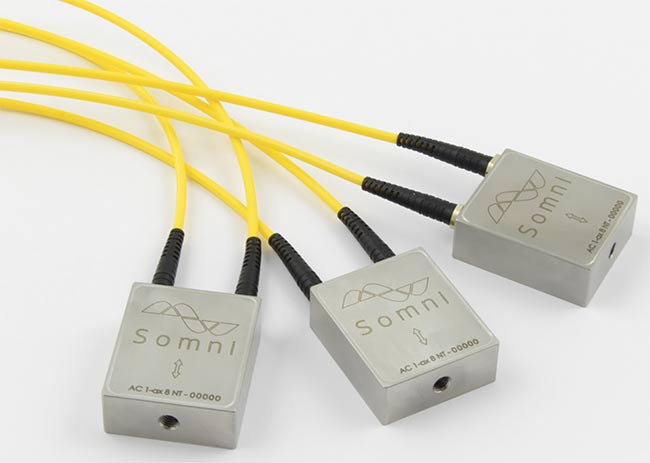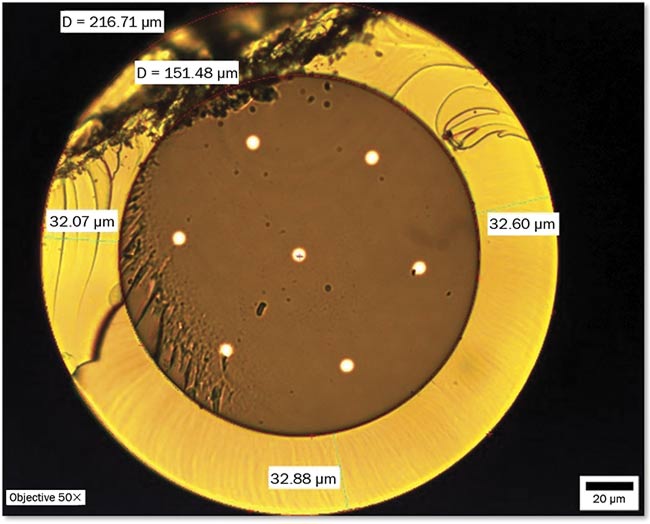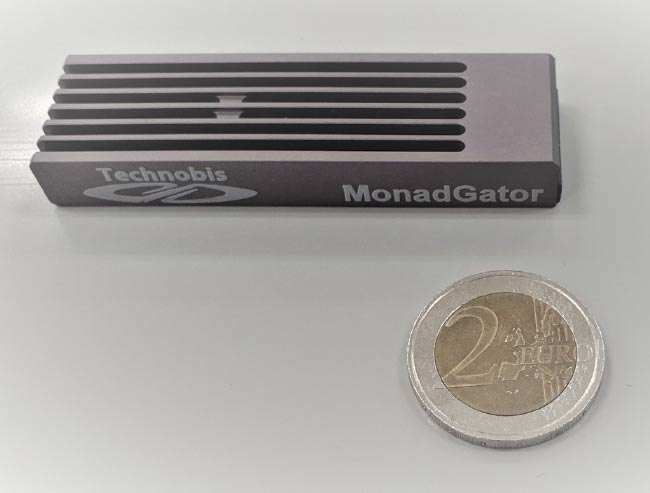Elena Beletkaia and Jose Pozo, European Photonics Industry Consortium (EPIC)
To accelerate sustainability, minimize maintenance, and monitor conditions remotely, new photonics solutions in a wide range of industries are required. Whether the aim is to ensure the delivery of electricity, monitor the security of a structure, improve the production of a well bore, or measure blood circulation in the body, precise and reliable optical sensing systems are needed that can withstand challenging environments and deliver high-accuracy data.
Fiber optic sensors
From the very beginning of fiber optics’ development, it was evident that optical fiber could be used as a sensor. Since then, a variety of designs and fiber optic measurement systems have been used in a range of highly sensitive and selective sensors for deployment in dynamic environments. Fiber optic sensors possess unique advantages for specialized applications — such as small size, light weight, robustness, flexibility, immunity to electromagnetic interference, and the ability to provide multiplexed sensing — allowing these sensors to measure a wide range of parameters, including temperature, strain, pressure, vibration, inclination, load, and displacement. Such versatility is paving the way for the use of fiber optic sensors in numerous industries, including oil and gas, automotive, aerospace, structural health monitoring, military, and biomedical.
While a fiber optic sensor (FOS) can act as a point sensor for monitoring parameters at one or more predetermined points, one of its key features is the ability to act as a distributed sensor, collecting data along the full length of the fiber. The most widely used point sensor is based on fiber Bragg grating (FBG). The parameter of interest is measured only at the point where the FBG is inscribed in the fiber. In other situations, multiple points can be inscribed, resulting in a quasi-distributed sensor. Sensors based on Raman, Brillouin, or Rayleigh scattering can be installed as fully distributed sensors, employing the whole length of the optical fiber as sensing media, providing a spatial mapping of the parameter along the fiber. Although distributed sensors have the advantage of spatially continuous measurement, they lose out to FBGs when comparing spatial resolution, price, complexity, and fragility.
Biomedical applications
Though used mainly as point sensors in biomedical applications such as blood flow monitoring, for example, fiber optic sensors possess many advantages. They can be used label-free, they are suitable for minimally invasive procedures, they are passive elements (producing no power), and they are small in size. Furthermore, these sensors can operate as in vivo diagnostic elements, assist other endoscopic devices in collecting data, or be used in smart textiles to monitor wearers’ vital signs.
FBGs are the key technology for biophysical sensing when measuring pressure, temperature, and strain at single or multiple points, and they can also supplement applications such as
diagnostics (e.g., cardiovascular, urology, or gastroenterology) and vitreoretinal robotic surgery. Most FOS applications involve shape reconstruction, with hundreds of FBGs per fiber in endoscopes, catheters, and guide wires.
Raman spectroscopy has great potential as a technique for differentiating between normal and neoplastic tissues, and fiber optic sensors have great potential within this modality. Raman spectroscopy can rapidly and noninvasively detect changes in the biochemical composition of cells and tissues at the molecular level. Berlin-based art photonics GmbH has employed this technique in the development of a Raman fiber probe, addressing two key parameters: maximizing Raman-scattered light collection and minimizing unwanted optical signals, such as fiber-generated Raman signals. These intrinsically weak signals can be masked by strong fluorescence from biomolecules and cells, so it has to be filtered by data processing.
Fused silica fibers can generate Raman signals and are characterized by a strong background signal generation that must be subtracted; thus, specific filters are required in both the delivery and collection arms. Moreover, similar to the other technologies, fiber optic sensors face the challenge of the strict regulation requirements that are applied to biomedical equipment by governing agencies. ISO-certified Philips Innovation Services, based in the Netherlands, has nevertheless finalized a few projects that incorporate fiber optic sensors. The sensors are used in its fiber-based shape-sensing catheters, spectroscopy instruments, and dental and surgical probes. These tools are used for tissue recognition and biopsies, while in-body devices are used for creating a light shade for imaging in a cavity.
Structural monitoring
The use of fiber optic sensors in civil engineering applications has had a huge positive impact on safety and sustainability. The sensors can provide data that answers questions such as “Is the bridge, rail track, or power cable indeed safe?” or “When and at what exact location is maintenance required?” In the case of installations for rail track monitoring to detect crack formation, sensors must be robust because shocks well over 100 g can occur when a train is passing. FBG-based single-axis acceleration sensors from Netherlands-based Somni Solutions (Somni Corp. BV) (Figure 1) are specifically designed to measure strong vibrations while featuring high sensitivity and wide range. They are also shockproof up to 500 g, and they can be customized — for example, to measure vibrations and loads on wires, which indicate how, when, and where to perform maintenance.

Figure 1. An FBG-based single-axis acceleration sensor. Courtesy of Somni Solutions.
FOS elements
A typical fiber optic sensing system is composed of four major components: a light source, optical fiber(s), optical coupling/filters, and a detector. The light source is typically a laser (pulsed, modulated, or steady state). Maintenance requirements for the lasers are strict, especially when the lasers are deployed in deserts or on oil platforms, where visiting the location to service them or change damaged lasers can be problematic. Ultralow phase noise, wavelength stability, low cost, and robustness are key features of the Koheras lasers from Denmark-based NKT Photonics A/S, which were developed for FOS applications. These lasers have wavelength stability, cover a range of wavelengths, and can be tuned in the 1-nm range.
The heart of any FOS system is the optical fiber itself. Since, historically, optical fibers have been primarily used in communications, they were mainly designed to minimize the influence of external factors on the light propagating inside the fiber. In contrast, for efficient operation of an FOS, the influence of the external medium is key and should therefore be maximized. Moreover, most modern applications demand fiber that fulfills specific requirements. The choice and design of an FOS is generally dictated by technological needs and issues under investigation, such as spatial resolution and localization, desired sampling volume, accuracy, access to the target site, and overall intent.
The abundance of optical fiber production and processing methods allows fabrication of specialty fibers to meet challenging requirements. The production of FBGs always requires an additional step: inscription of the grating. For this reason, it can be advantageous to combine the process of fiber drawing with the inscription of gratings. When such a combination is employed, it allows the coating to be applied after the inscription of the gratings, thus maximizing the mechanical strength
of the fiber.
Using this type of fiber manufacturing process, Belgium-based FBGS International NV offers a high number of gratings and mass volumes. Additionally, the company can combine the inscription of gratings using the draw tower on the multicore fiber. Such special fibers are used in applications such as shape sensing via the differential response in the various cores of the multicore fiber (Figure 2).

Figure 2. Draw-Tower Grating technology in multicore fiber. This fiber consists of seven cores — one center and six outer. The center-to-core distance is 36 µm, and the outer cores are situated on a 72.56-µm-diameter circle. D: diameter. Courtesy of FBGS International.
While the appropriate choice of optical fiber is critical, of equal importance is the correct method of installation. The fiber must be tightly and precisely positioned, and at the same time it must be sufficiently flexible to respond to external factors. Excessive flexing of a tight bend radius should be avoided because of the risk of breaking the fiber cable. Also, if the bend radius is too tight, it can cause fiber deformation, resulting in reduced or blocked light transmission.
Solutions include special designs of the core of the optical fiber or outer layers of the cable, which do not exhibit any optical loss due to bending. The only limitation with respect to the minimum bend radius is buildup of surface strain. More important, however, are proper installation and deployment of the sensing fiber (single core or multicore), which are key to ensuring accurate sensing.
To maximize the data yield and quality from an FOS system, an application-dependent combination of optical fiber design and interrogator is critical. Netherlands-based Optics11 offers the whole FOS system, addressing applications such as structural health measurements on cryogenic tanks and nuclear installations or equipment in high-voltage zones, which is exposed to harsh conditions such as extreme temperatures, radiation, and/or electromagnetic interference. The company’s technology includes an acoustic emission sensing system and accuracy and precision FBG interrogators, whose specs allow the system to be used for bridge monitoring, which requires stable and reliable long-term measurements. For example, the system and interrogators can acquire 35 sensing points monitoring 70 FBGs for temperature and strain, with each point recorded at 250 Hz.
When optimized for high-density measurements and high-speed recording, the optical sensing system, which is highly sensitive to low strain levels, can be employed for road and traffic monitoring (weigh-in-motion systems). Notably, a single recorder unit can be used for multiple lanes (Figure 3), and the system can be completely buried, with no surface visibility.

Figure 3. The installation of an FBG sensor strip, part of a weigh-in-motion system. Courtesy of Optics11.
While many different state-of-the-art interrogators are currently available on the market and in use in such industries as oil and gas and homeland security, one major drawback of FOS technology for other applications is its high cost. Many applications could benefit from fiber optic sensors, but such systems are not yet affordable in every industry. Photonic integrated circuits (PICs) are an attractive alternative technology for the next generation of interrogation devices for fiber optic sensing. PIC-based interrogators feature reduced size and weight and hybrid integration of optics and electronics, enabling miniaturization of the devices.
For example, PIC-based interrogators can be used for vehicle crash tests (to provide in-depth knowledge about the structural and energy absorption behavior of vehicles and their components, and about the effects of a crash on vehicle occupants); for biomedical applications as part of MRIs, multipoint/parameter sensing, and cardiovascular interventions; and for critical parts in aircraft and their and landing gear.
Netherlands-based Technobis offers spectrometry or interferometry PIC-based interrogators for detection of wavelength shifts (Figure 4). Its first PIC-based interrogators hit the market in 2016, and the company has continually added new ones. These interrogators feature a standard 1-pm to 1-fm resolution and 20-kHz sampling frequency with 10 FBGs per channel, or they can be customized, such as with 10,000 FBG sensors in only four fibers. They offer absolute temperature monitoring in human bodies, high-temperature monitoring in electric cars and aircraft, and pressure sensing.

Figure 4. A prototype of the MonadGator, a USB thumb-drive-size interrogator. Courtesy of Technobis.
Technobis PIC-based interrogators have proved their capabilities in multiple applications: blood-temperature measurement with 0.01 °C accuracy for heart condition monitoring; absolute temperature measurement with 0.1 °C accuracy during medical treatments involving MRI and radio frequency; sub-nano-strain measurements in critical optical parts of semiconductor front-end machinery; measurement of strain in harsh environments, in temperatures ranging from −45 to 175 °C; distributed temperature sensing in critical (hot) aircraft systems; and distributed sensing (nine to 20,000 sensors) in security (perimeter) monitoring, including for pipelines, power lines, and railways.
The supply chain for fiber optic sensors is broad and diverse — encompassing fiber design and manufacturing, fiber testing, installation, and use in a wide range of applications. And the selection and design of suitable FOS systems is a critical task for ensuring optimal outcomes for specific applications. To address these and other related issues, EPIC will hold a meeting (dates to be announced) on fiber sensors at HBM FiberSensing in Porto, Portugal, to bring together representatives of the entire supply chain to discuss FOS techniques and to find solutions for the most challenging and ambitious applications.
Meet the authors
Elena Beletkaia, Ph.D., is project leader at the European Photonics Industry Consortium (EPIC). She graduated from Lomonosov Moscow State University, where she specialized in biophysics. In 2015, Beletkaia received a doctorate from Leiden University, where her research focused on the biochemical and biophysical mechanisms underlying the metastasis of Ewing sarcoma. Later, in the collaborative setting of NKI (the Netherlands Cancer Institute) and the University of Twente, she investigated the application of noninvasive spectroscopic/multiphoton methods for intraoperative resection margins assessment. All of Beletkaia’s research projects have involved the understanding and use of multiple microscopic and spectroscopic techniques; email: [email protected].
Jose Pozo, Ph.D., is director of technology and innovation at the European Photonics Industry Consortium (EPIC), where he represents more than 500 leading corporate members active in the field of photonics. Pozo’s task consists of engaging with members and providing them with the tools to strengthen their positions in the supply chain. He has a 20-year background in photonics technology and market knowledge and a large network within the industrial and academic photonics landscape. Pozo has a doctorate in electrical engineering from the University of Bristol in England, and master’s and bachelor’s degrees in telecommunications engineering from universities in Spain and Belgium; email: [email protected].